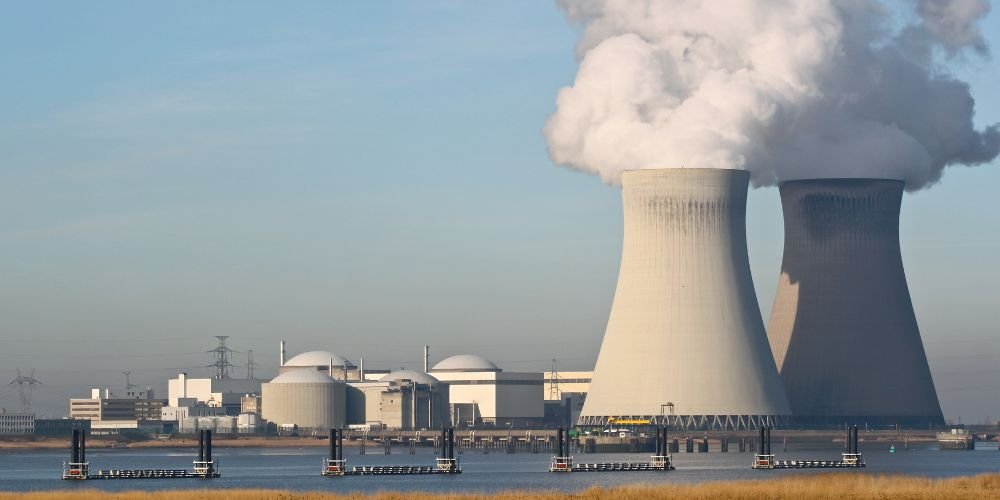In pursuing clean and reliable energy, nuclear power has emerged as a prominent contender, offering a low-carbon alternative to fossil fuels. However, the benefits of nuclear power come hand-in-hand with the challenge of managing its byproduct: nuclear waste. Nuclear waste management is a critical concern that demands careful consideration and responsible solutions. As we navigate the complexities of nuclear energy, finding effective ways to handle and dispose of nuclear waste stands as a moral and technological imperative.
The Nuclear Waste Conundrum
Nuclear waste, also known as radioactive waste, is a byproduct of nuclear power generation and various industrial and medical applications. It includes materials that remain radioactive and hazardous for thousands of years. Safely managing nuclear waste is a multifaceted challenge involving technical and scientific considerations and ethical, environmental, and public acceptance.
The two main types of nuclear waste are high-level waste, which includes spent nuclear fuel and other highly radioactive materials, and low-level waste, which is less radioactive and generally comes from reactor operations and decommissioning activities.
Safe Storage and Disposal
Addressing nuclear waste management requires a multilayered approach that combines safe storage, efficient transportation, and responsible disposal. Nuclear waste is long-lived, necessitating solutions that ensure its isolation from the biosphere for millennia, preventing potential harm to both the environment and future generations.
One common method of nuclear waste storage is using specialized containers designed to contain radiation and prevent leakage. These containers are stored in secure facilities, often deep underground or in specially designed repositories. Over time, the radioactivity of the waste decreases, and its potential risk to humans and the environment diminishes.
Innovations in Disposal
Deep geological repositories represent a promising solution for long-term nuclear waste disposal. These repositories are located deep underground in stable rock formations, isolating the waste from the surface and any potential environmental impacts. Countries like Finland and Sweden are leading the way in implementing such repositories, demonstrating that geological disposal is both feasible and scientifically sound.
The successful establishment of deep geological repositories hinges on thorough scientific assessments, public engagement, and regulatory oversight. Building trust among stakeholders and communities is crucial to ensuring the acceptance and safety of such repositories.
Transparency and Public Engagement
Managing nuclear waste is not just a technical challenge—it’s a matter of public trust and engagement. Open and transparent communication about nuclear waste management is essential to building consensus and ensuring that decisions are made in the best interests of current and future generations.
Public participation and input in decision-making foster a sense of ownership and responsibility. Communities hosting nuclear waste facilities should have a say in the siting, construction, and operation of such facilities. This participatory approach leads to better-informed decisions, fosters public acceptance, and reduces opposition.
Advancing Nuclear Waste Solutions
Technological innovation plays a critical role in advancing nuclear waste management solutions. Research is ongoing to develop advanced materials and techniques that enhance the storage and disposal of nuclear waste. These advancements, from improved waste encapsulation materials to innovative ways of immobilizing radioactive particles, contribute to safer and more effective waste management.
Furthermore, research into advanced reactor technologies, such as small modular reactors and fast reactors, could lead to reactors that generate less long-lived waste and even have the potential to consume existing nuclear waste as fuel. These innovations can reshape the nuclear waste landscape and create more sustainable pathways for managing radioactive materials.
International Collaboration
Borders do not confine the challenge of nuclear waste management. International collaboration is essential in sharing knowledge, best practices, and lessons learned. Organizations like the International Atomic Energy Agency (IAEA) facilitate cooperation among countries to ensure that nuclear waste management standards are upheld and that innovative solutions are shared globally. Countries can collaborate on research, safety assessments, and regulatory frameworks to collectively address nuclear waste management’s technical, ethical, and societal dimensions.
The key to effective nuclear waste management lies in collaboration, transparency, and innovation. By engaging the public, sharing knowledge, and investing in research and technology, we can pave the way for a future where nuclear waste is managed to respect our planet and safeguard the well-being of current and future generations.
Conclusion
Nuclear waste management is a challenge that transcends time and generations. It requires a commitment to responsible solutions prioritizing safety, environmental protection, and public well-being. As we continue to harness the benefits of nuclear power and other radioactive applications, we must also embrace the responsibility of managing the waste they produce.
Ultimately, nuclear waste management is not just a technical puzzle—it’s a moral obligation that underscores our role as stewards of the environment. As we navigate the complexities of nuclear energy, let us uphold the values of responsible stewardship, working collectively to ensure a safer, cleaner, and more sustainable energy future.












